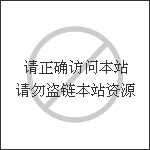部分原文报道如下:
Following a request from the European Commission, EFSA was asked to deliver a scientific opinion on the safety and efficacy of Macleaya cordata (Willd.) R. Br. extract and leaves (Sangrovit® Extra) when used as a zootechnical feed additive (functional group: other zootechnical additives) for all poultry species (excluding laying and breeding birds). The additive is standardised to contain a concentration of the sum of the four alkaloids sanguinarine, chelerythrine, protopine and allocryptopine of 1.25%, with 0.5% sanguinarine. Owing to the presence of the DNA intercalators sanguinarine and chelerythrine, a concern for genotoxicity was identified. The EFSA Panel on Additives and Products or Substances used in Animal Feed (FEEDAP) had no safety concerns when the additive is used at the recommended level of 150?mg/kg complete feed (corresponding to 0.750?mg sanguinarine/kg complete feed) for chickens for fattening and other poultry species for fattening. No conclusion can be drawn for poultry reared for laying/breeding. The use of Sangrovit® Extra in poultry species for fattening at the maximum recommended level was considered of low concern for consumers. The additive was shown to be irritant to the eyes but not irritant to skin or a skin sensitiser. The FEEDAP Panel could not exclude the potential of the additive to be a respiratory sensitiser. When handling the additive, exposure of unprotected users to sanguinarine and chelerythrine may occur. Therefore, to reduce the risk, the exposure of users should be reduced. The use of Sangrovit® Extra as a feed additive under the proposed conditions of use was considered safe for the environment. The additive Sangrovit® Extra had the potential to be efficacious in improving performance of chickens for fattening at 45 mg/kg complete feed. This conclusion was extended to chickens reared for laying/breeding and extrapolated to all poultry species for fattening or reared for laying/breeding.


